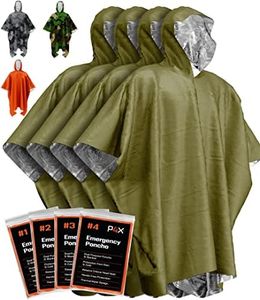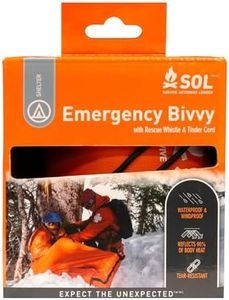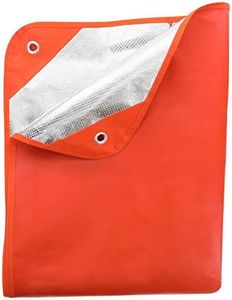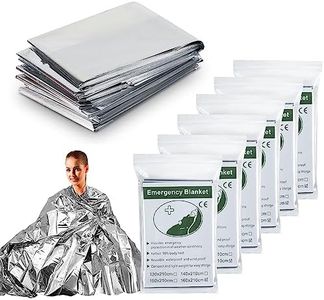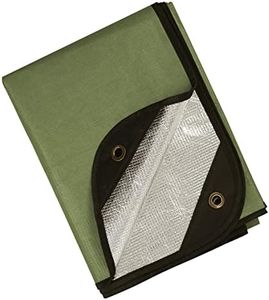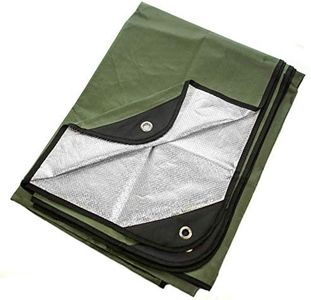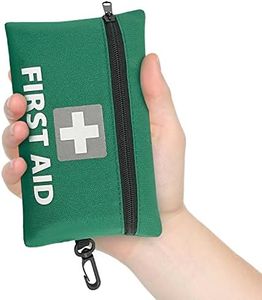We Use CookiesWe use cookies to enhance the security, performance,
functionality and for analytical and promotional activities. By continuing to browse this site you
are agreeing to our privacy policy
10 Best Emergency Blankets
From leading brands and best sellers available on the web.Buying Guide for the Best Emergency Blankets
Emergency blankets, often called survival blankets or space blankets, are compact and lightweight items designed to help retain body heat in situations where you are exposed to cold, wet, or windy conditions. They are crucial for activities like hiking, camping, or keeping in your car for unexpected situations. When choosing an emergency blanket, you should focus on how effectively it can protect you from the elements, how easy it is to carry, and whether it suits your planned use scenario. Understanding the main features will help you select a blanket that gives you the best balance between practicality and protection.MaterialThe material of an emergency blanket largely determines its effectiveness in trapping heat and its durability. Common materials include Mylar (a thin, reflective polyester film) and heavier-duty, reinforced plastics or fabrics. Mylar is very lightweight and highly reflective, which makes it great for retaining body heat but can tear easily. Reinforced blankets offer more durability and can be reused, but are usually bulkier. Think about how you plan to use your blanket—if it's for a one-time emergency or to stuff in your small hiking pack, Mylar might be right; if you want something more reusable or for regular outdoor excursions, a sturdier material might serve you better.
SizeBlanket size impacts how well it will cover you and how much protection it provides. Most emergency blankets can be categorized as standard (enough for one adult), extra-large (roomier, better in extreme conditions or for sharing), or compact (smaller to save space, but may not offer full coverage). If you’re tall or plan to use the blanket as a shelter or ground cover, choosing a larger size makes sense. For personal emergency kits where space is at a premium, a standard or compact size may be enough.
Weight and PackabilityWeight and packability refer to how much space the blanket takes up and how heavy it is. Since emergency blankets are for unexpected events, lighter and more compact designs are typically more practical. Some heavier, more rugged options may be better for car kits or camping but wouldn’t be ideal to carry in a pocket. If you’re making a bug-out bag, hiking kit, or want something to keep in your glove compartment, go for the lightest, most compact option that still meets your needs for coverage and durability.
Waterproofing and WindproofingThese features describe the blanket’s ability to block water and wind. Most emergency blankets are waterproof and windproof due to their non-porous construction, but the degree can vary. Some reinforced designs offer extra protection and don’t tear as easily. If you plan to use your blanket in rainy or windy conditions, or as a makeshift shelter, consider options specifically labeled as highly waterproof and windproof, as this will ensure better reliability in harsh weather.
ReflectivityReflectivity is the blanket’s ability to reflect your body heat back to you, which is essential for preventing loss of warmth. Most space blankets claim to reflect 80-90% of radiated body heat. Higher reflectivity means better insulation. For colder environments, or if hypothermia is a significant concern, opt for blankets with a higher stated reflectivity. In milder climates or for emergency kits that you may rarely use, standard reflectivity is usually sufficient.
Durability and ReusabilityDurability concerns how resistant the blanket is to tears and punctures, affecting whether it can be reused. Simple Mylar blankets may rip easily if snagged, while reinforced, multi-layer options last longer and can handle more rough use. If you anticipate you’ll use your blanket multiple times, or want to use it as a tarp or shelter, consider more durable, reusable designs. For emergencies where minimal weight and size are more important, a single-use option might work just fine.
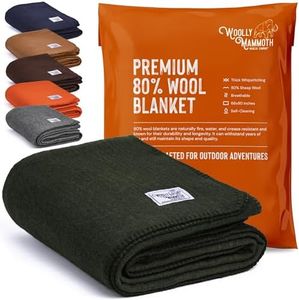
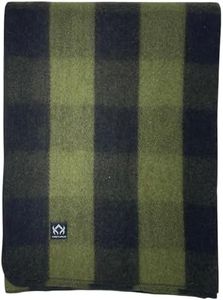
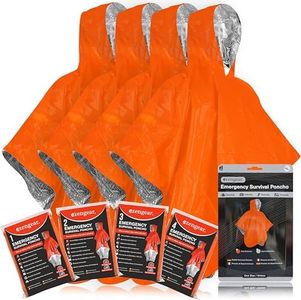
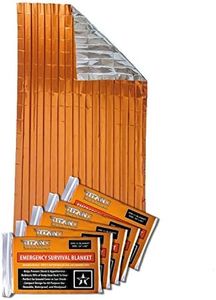
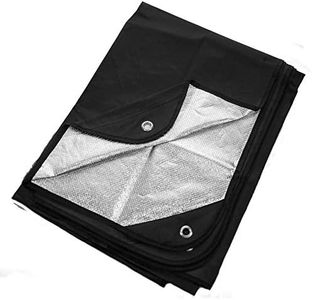
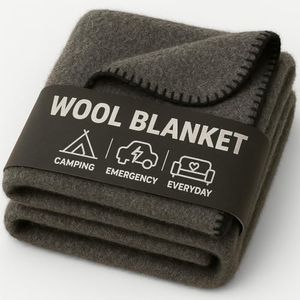
![World’s Toughest Emergency Blankets [4-Pack] Extra-Thick Thermal Mylar Foil Space Blanket | Waterproof Ultralight Outdoor Survival Gear for Hiking, Camping, Running, Emergency, First Aid Kits [Green]](https://images-proxy.bestreviews.guide/-AEdy0JRz8MgNh_05jdGu0UISJY=/0x300/https://m.media-amazon.com/images/I/51CWbxoG41L._AC_CX679_.jpg)
